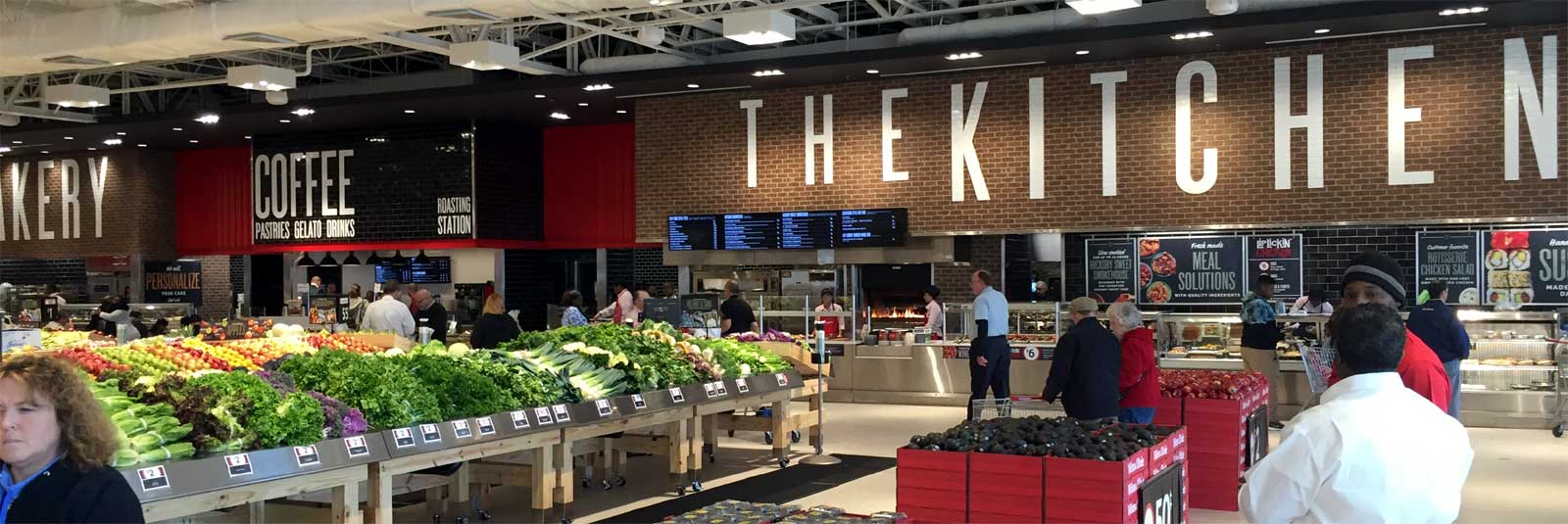The lines between food retail and foodservice continue to blur as retailers and foodservice providers are adopting similar strategies and product offerings. This blurring of lines is known as the “Retail-ization of Foodservice” or “Foodservice-ization of Retail”
Food retail: Food retail refers to the sale of food products through retail channels such as supermarkets, grocery stores, and online platforms. Retailers typically focus on selling packaged, processed, and perishable food products.
Foodservice: Foodservice refers to the sale of food and beverages that are prepared and consumed away from home, such as in restaurants, hotels, and other commercial establishments. Foodservice providers typically focus on selling freshly prepared meals and snacks.
The blurring of lines between food retail and foodservice can be seen in the increased use of technology, such as online ordering, delivery, and mobile payment, by both retailers and foodservice providers. The trend is also visible in the rise of new retail formats such as meal kit delivery, online grocery, and ghost kitchen, that blur the line between retail and foodservice. Increasingly, food retailers are expanding their offerings to include more fresh and prepared foods, such as deli counters, salad bars, and prepared meals. Additionally, foodservice providers are beginning to sell packaged and processed foods, such as frozen meals and snacks, in retail channels.
Supermarket operators experiment with grocerants
A grocerant is a hybrid retail and foodservice concept that combines the features of a grocery store with those of a restaurant. The term is a combination of the words “grocery” and “restaurant.” It’s a relatively new concept that emerged in the food industry, as retailers are starting to offer foodservice options such as ready-to-eat meals, meal kits, and food courts within their stores.
While it’s difficult to estimate an exact number of supermarkets that are considered grocerants, more of these retailers are starting to incorporate elements of foodservice into their stores in order to meet consumer demands and stay competitive in the marketplace.
Some of the larger supermarket chains in the US, like Whole Foods, Wegmans, and Kroger, have been experimenting with grocerant concepts, offering prepared meals, meal kits, and food courts within their stores. Some supermarkets have also started to include seating areas and food counters where customers can eat on-site or take the food home. Other retailers like Target and Walmart also have been implementing food courts and fresh food options within their stores.
In addition, many smaller and independent supermarkets are also starting to adopt grocerant concepts by offering fresh food options, food counters, and meal kits to customers. Generally speaking, grocerants will include a wide variety of food options such as fresh produce, meats, dairy, frozen foods, and packaged goods, as well as a variety of food service options such as grab-and-go meals, meal kits, and food counters with prepared foods, sandwiches, and salads. These stores can be equipped with seating areas, so customers can eat there, or they can take the food home. Some grocerant also offer a delivery service to customers’ homes.
The concept of grocerant is intended to provide customers with more convenient and diverse food options, while also providing retailers with an opportunity to increase sales and foot traffic. It also allows foodservice operators to expand their market by making their products available for purchase outside of the restaurant.

